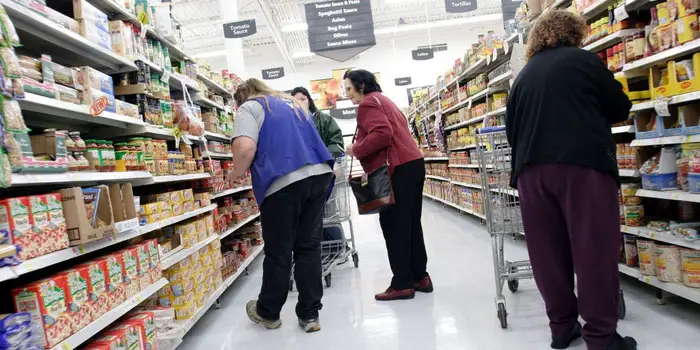The US annual inflation slowed slightly in August, mostly thanks to the decline in gasoline prices – but the possibility was not enough to satisfy the Federal Reserve and President Joe Biden, because high prices continued to cause pain in Americans. Consumer Price Index (CPI), the main size of inflation, actually rose 0.1 percent in August compared to July, when the price is flat, the Department of Manpower said Tuesday, disappointing results in the midst of widespread expectations that inflation would fall in the month.
Annual inflation speeds increased to 8.3 percent, higher than expected but slightly below the previous months and confirmed the slowdown from the 9.1 percent blazing level in June – the highest in 40 years. Prices have jumped for months, exacerbated by the Russian invasion to Ukraine, which has affected the price of energy and food, as well as sustainable supply chains in the midst of Covid locking in China.
While Americans will welcome assistance at the pump – there has been a decrease in stable gasoline prices, which fell 10.6 percent last month – costs for food and housing continue to increase, holding the family budget. The food index increased 11.4 percent from last year, the 12 -month increase in the largest period since the period ended in May 1979, said the report.
Medical maintenance has also been the main contributor, and the price of the car has been accelerated, up 0.8 percent in a month, according to the report. More worrying, the report shows that – excluding the price of volatile food and energy – CPI “core” rose 6.3 percent over the past 12 months, faster than speeds of 5.9 percent seen in July and June.
The core CPI jumped 0.6 percent in August, doubled the speed in July, the data showed. Inflation has become a hot political problem in only a few weeks from the main congress election, and Biden has made a high price battle of domestic priorities, so that any assistance will be welcomed in the White House.
“Inflation is too high, and it is very important for us to reduce it,” said Minister of Finance Janet Yellen on Sunday, echoing the comments he and other administrative officials repeatedly made their sympathy with the fate faced by consumers and companies. Jason Furman, a former White House economist, said the data was “not beautiful.” The “ugly” core data shows “broad -based assistance does not come,” he said on Twitter.
Federal Reserve views inflation as the biggest risk for the largest economy in the world, and has moved aggressively to cold demand, increasing the level of benchmark loans four times this year-with the third-quarter-quarter point increases that are expected to be wide next week. Fed action increases loan costs for home and business buyers, which tend to cool investment and expenses. Chairman of Fed Jerome Powell said the central bank would do anything to ensure that high prices were not rooted, even with the risk of wetting the economy into a recession.
“The clock continues to beat,” Powell warned Friday, promised to “Stay until the work was finished.” Yellen acknowledged that there was a “definite risk” of the economic decline amid the increasing loan costs, but he noted the US job market was “very strong” with almost two vacancies for every worker who was looking for a job.
He warned that “We cannot have a strong labor market without inflation under control.” Strong Job Market – Unemployment rate is 3.7 percent in August – providing comfort to the Fed, providing policy making space for maneuvering, and has the potential to extinguish inflation without a sharp increase in unemployment. But the lack of workers remains a concern because it can trigger a dangerous spiral wage.
Rubela Farooqi from the high frequency economy said the latest data confirmed “inflation reading remains high for policy makers.” Coupled with a strong labor market, data sealing agreements for aggressive points, 75-Basis, the rate of increase next week,” he said in an analysis.

